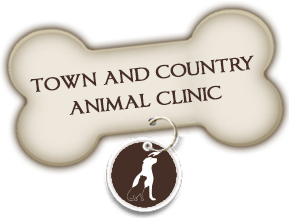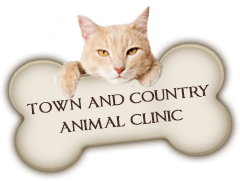Travelling with the family pet can be a fun experience if proper planning has been done before you embark on your trip.
There are several factors you should consider before planning to take your pet on vacation with you:
- Has your pet travelled before and is he happy and comfortable when travelling?
- Does your pet have any medical problems (ex: heart issues) that would make it unwise for him to travel?
- Is your destination (friends, motel, campgrounds) a pet friendly environment?
For pet friendly locations check www.petfriendly.ca
- Will your vacation allow you to take time out of your schedule to attend to your pet’s daily needs (meals, “pit stops”, exercise)?
- How will your pet react to being left alone at a hotel or campground if you go out to dinner or to an event without him?
Vaccines & Identification
Once you have determined that you are able to take your pet with you on your vacation, it is important that your pet have proper immunizations and identification.
- Make sure your pet’s vaccines (including rabies, kennel cough or any other vaccines needed based on what your pet will be exposed to)are up to date at least two weeks prior to your trip. This will allow your pet to be fully protected against the diseases he was vaccinated for. Remember to bring his vaccine certificate with you.
- Always ensure that your pet wears a collar with a complete identification tag (listing your name, address and phone number as well as the pet’s name). Having his rabies tag on his collar will provide your Veterinarian Clinic name and phone number. This will act as a second contact number, if you are not home to receive a call regarding the whereabouts of your pet.
- It’s also a good idea to carry a recent photo of your pet with you. Should something happen where your pet becomes lost a photo may help you reconnect with your pet.
Beds, Blankets & Toys
Your pet will feel much more secure while travelling if he has a familiar bed or blanket with him, as well as a few of his favorite toys. Even having his own feeding dish from home can be helpful.
Food & Water
- Take a supply of your pet’s food along with you in case you are unable to purchase the same brand during your trip. Your pet will already be making emotional and physical adjustments as you travel and suddenly adding a new food may cause unnecessary digestive issues.
- Do not travel immediately after feeding your pet. This could lead to an upset stomach.
- An occasional small treat during the day may help him overcome any strange situation that may make him nervous.
- Feed lightly in the morning and leave his main meal for the evening time when you have finished travelling for the day.
- You should also consider taking a container of water from home with you. Some animals are very sensitive to changes in the taste of their food or water. It may take some time for your pet to begin drinking a different taste that he is not accustomed to.
Exercise
Your pet will need exercise every few hours while you are travelling. Never allow your pet to run free without a leash while you are travelling even though he may be used to doing so at home. Attach the leash before the dog leaves the car. Something new or strange might catch his interest and he may bolt off without warning and become injured or lost.
“Home Alone” In The Motel
If it is necessary to leave your pet alone in a hotel room for a short period of time, make certain there is no way for him to escape. Leave him in a cage or in the bathroom and inform housekeeping personnel not to enter the room while you are away. Also use the “Do Not Disturb” sign.
Always be considerate of others when deciding where you are leaving your pet. Even though your dog may not bark when he is alone at your house, he may be nervous in the hotel and bark continuously.
Travelling By Car
- Take your pet on a few short rides before your trip to see how he handles the car ride.
- Cats often travel better if put in a carrying cage which offers them a sense of security.
- If your pet is prone to motion sickness, talk to your veterinarian about appropriate medications that may prevent this problem.
- Do not allow your pet to ride with his head out of the window. Particles of dirt or debris can damage his eyes, ears or nose. Excessive amounts of cold air can also damage his lungs. There is also the danger that he will lean out too far, lose his balance and become seriously injured or killed in a fall to the roadway.
- Do NOT leave your pet in a parked car in the summer, even for a very short length of time. A pet can be overcome by the heat accumulated in a car in a mater or minutes.
Travelling By Plane
Serious thought should be given to travelling by plane with an animal that has a medical condition. A pet with a kidney, liver, heart condition or breathing condition may not be an optimal candidate for flying. If you decide your pet is healthy enough to make the trip here are some things to consider when choosing an airline:
- Familiarize yourself with that particular airline’s pet requirements in order to avoid last minute problems.
- Book direct flights and try to avoid connections and layovers. This eliminates missed baggage connections and the chance that your pet will be lost or left out in extreme weather conditions.
- In warmer months, reduce the chance of overheating by flying in the early morning or evening.
- Avoid the busiest travel times so airline personnel will have time to handle your pet.
- Plan to check in at the airport at least three hours in advance.
The Proper Crate
- Make sure your travel crate meets the airline’s standards and is large enough for the pet to lie down comfortably, turn around and stand freely.
- The walls of the carrier should be strong and waterproof in order to prevent crushing and urine leakage, and have adequate ventilation on at least three sides of the cage.
- The cage must have sturdy handles for baggage personnel to use.
- Make certain the crate is clearly identified with the pet’s name, your name, address and phone number, feeding instructions and the destination of the pet. If you will also be away from home, include an emergency number where either you or a family member or friend can be reached. The identification information should be securely and permanently attached to the crate and made of material which cannot be ripped off in handling or chewed at by an anxious pet.
- Your pet should also wear a collar with identifying tags.
- The cage should have a water tray which is accessible from the outside so that water can be added if needed. Placing frozen water in the tray just before the flight may help ensure that your pet will have water during the flight.
- Cover the bottom of the cage with an absorptive covering or underpad (such as those designed for bedridden people with bladder control problems).
Preparing Your Pet For The Flight
- Make certain your pet’s vaccinations are up to date and take all necessary health certificates with you. Health papers required will vary depending on your destination. Be sure to check prior to your trip. If you are travelling to a foreign country, check into that country’s specific admission and quarantine requirements.
- Do not tranquilize your pet without first discussing it with your veterinarian. If your veterinarian feels sedation would aid in your pet’s travel, allow time prior to the trip to perform a “trial run” with the medication. Note the time you have given the medication to your pet, the time he became sedate or comfortable and the time that the effects wore off. This will allow you to know how that specific drug affects your pet and at what time prior to your trip to give the medication.
- Do not feed your dog for six hours before the flight; allow water until the time of the flight and give the dog water as soon as it arrives at its destination.
- Check the regulations of the airline regarding small pets riding in the passenger car with you. This may be easier on your pet to ride with you as opposed to away from you in the cargo area.






